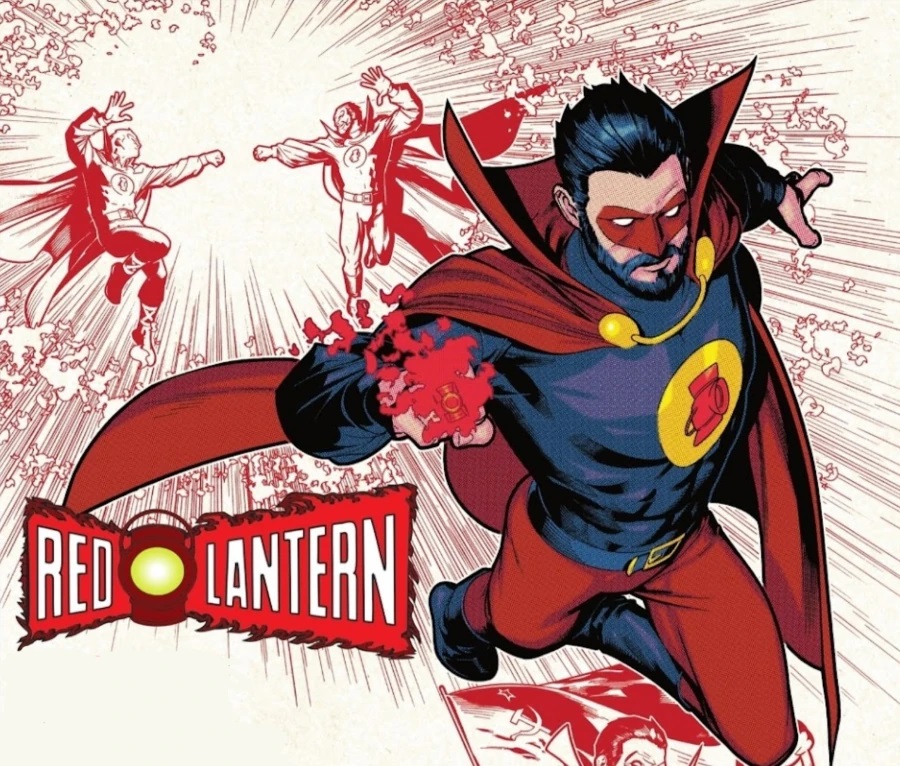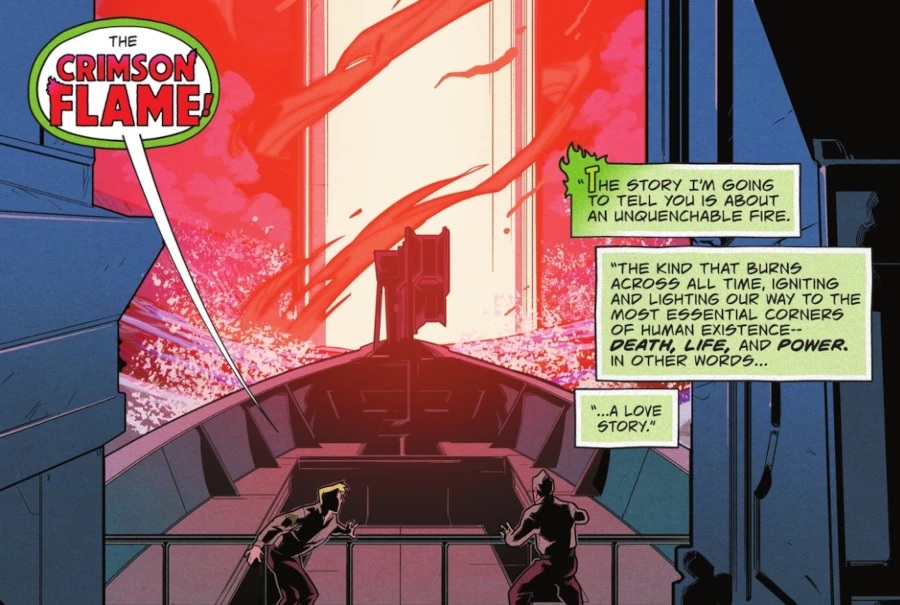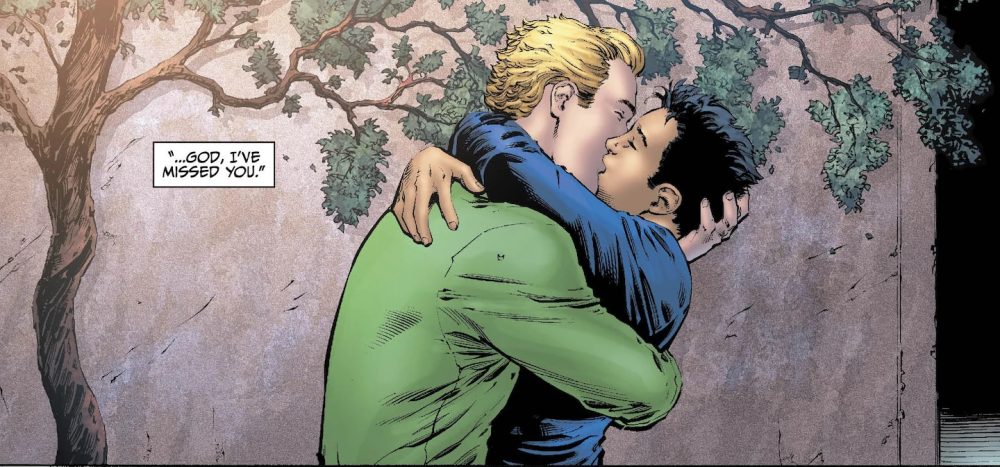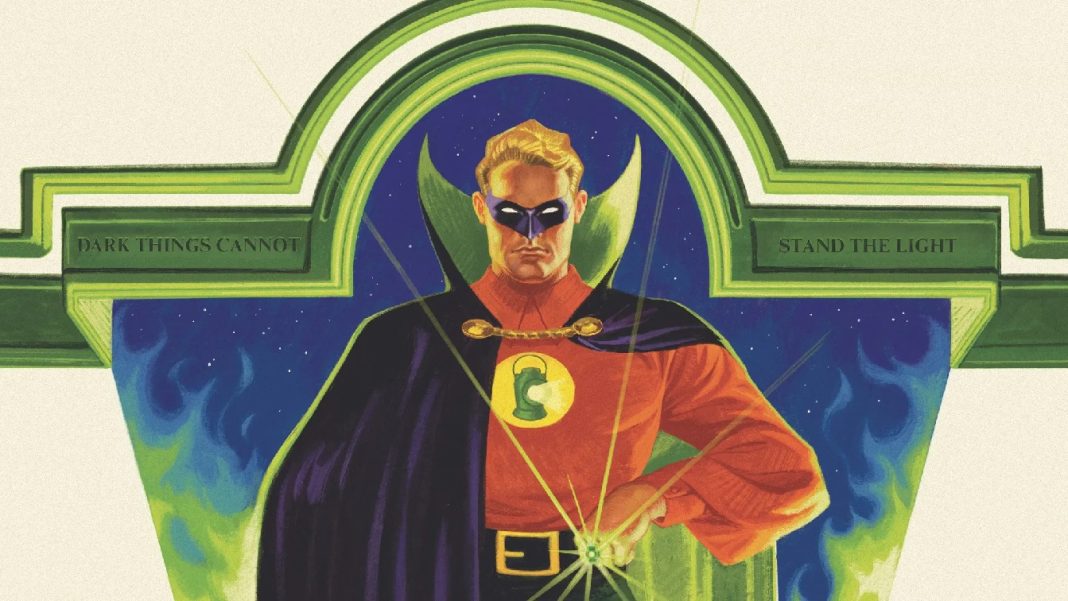Tim Sheridan has certainly had some career highlights in recent years whether it was working on animated properties like Masters of the Universe: Revelation or Transformers: The War for Cybertron Trilogy for Netflix or masterfully adapting the acclaimed Batman: The Long Halloween comic storyline into an animated direct-to-video movie. Given his extraordinary work in various DC Comics animated projects, it wasn’t too surprising that the publisher tapped Sheridan to try his hand in the comics industry. With quite a number of comic projects under his belt including Teen Titans Academy and Flashpoint Beyond, he’s definitely been living the fanboy dream. However, the best is yet to come from Sheridan with the much anticipated Alan Scott: The Green Lantern, a six-issue miniseries penned by Sheridan with art by Cian Tormey.
The character of Alan Scott, the original Golden Age Green Lantern and founding member of the Justice Society of America, made headlines a decade ago when he came out as gay. It’s an aspect that resonates enormously for the openly gay Sheridan. During San Diego Comic-Con, we had the enormous pleasure of sitting down and chatting with Tim Sheridan about the miniseries. During our discussion, Sheridan not only teased the surprises in store but also revealed how much the project resonated for him.
Taimur Dar: The character of Alan Scott has been around for decades and many creators have helped define him over the years. That said, even I have difficulty describing Alan Scott’s personality to somebody who doesn’t read comics. What is your interpretation of Alan Scott?
Tim Sheridan: First of all, he’s a born hero. You can say that about a lot of characters in the DC Universe. But he was one of the first. He’s a born leader and a born hero. But we’re also learning that there are more parts to his personality and life that he has not been open about with others or himself. We’ve seen him out of the closet and that makes for a very different look at a guy, like you said, we didn’t feel like we knew much about him. Now we know a lot about him personally and you have to wonder what does that mean at the point of his origin? In the 1930s and 1940s, what did it mean to be a closeted gay man but also a superhero heralded in the light but a criminal at night in your own bedroom? How does that make him feel, especially after having just been a part of the formation of the Justice Society?
Alan’s got a lot of secrets and secrets can be corrosive and damning. While we get to relive all the fun of his origin of becoming the Green Lantern and the origin of his nemesis, the Red Lantern, there’s also another side to that coin. There is a darkness and pathos throughout the story. The story is about a man coming out of the darkness into the light. In order to tell that story, we’ve got to begin in the darkness. We’re going to see some very brutal but honest stuff about what it means to be a guy like Alan in the 1930s.
Dar: You alluded to his nemesis, Red Lantern, the Russian counterpart to Alan Scott that Geoff Johns developed. It’s an interesting time to say to the least to feature a Russian character considering America’s current political relationship with the country. Did current politics influence how you depicted Red Lantern?
Sheridan: It’s interesting how much the current political situation with Russia can invoke feelings of what we’ve read about like the Red Scare. There are similarities we might draw but that’s not something I’m focused on in terms of the writing. What I’m focused on are these two character—Alan Scott, The Green Lantern and Vladimir Sokov, The Red Lantern. What do they as archnemeses mean to each other but also what do their powers mean to each other? Are they related at all? Alan’s at a point where he’s just starting out and there have been no Green Lanterns before him. There’s no one to explain it to him. He’s figuring it out as he’s going along. There’s a lot for him to learn. If you’ve ever read classic Golden Age Alan Scott, his powers were weird. It didn’t look like Hal Jordan’s powers. When he started, the energy constructs were done in a weird way. He could walk through walls! So why is that and what does it mean for the entire Green Lantern Corps? We’re going to throw out some interesting ideas.

Sheridan: It’s almost completely in 1941. We’re in the 1930s in much of issue #1 and #2. But we’re also seeing 1941. We’re kind of going back and forth a little bit in the first couple of issues. And then we’re pretty much in 1941 which is right after the formation of the Justice Society but before we’ve gotten into World War II.
Dar: It’s difficult to keep track of DC continuity since it’s always changing but I know at one point the Starheart, the source of Alan’s Scott’s powers, was revealed to be connected to the Guardians of the Universe and thus the Green Lantern Corps. I can’t help but wonder if the Golden Age Red Lantern has any connection to Atrocitus and his Red Lantern Corps?
Sheridan: The power of the Red Lantern is derived from something called the Crimson Flame. We saw a peak of the Crimson Flame in the 6-page on-ramp story that was in DC Pride: Through the Years #1. So, what the heck is the Crimson Flame? What relationship, if any, does it have to the Starheart? These are very good questions, and they are ones we are tackling. We’re going to try to explain things that didn’t all tie together in the olden days and connect some of the dots in a way that doesn’t upend the history of the character. I’m not here to reinvent Alan Scott.

Sheridan: Jeremy Adams and I got to write Flashpoint Beyond with Geoff. That was the thrill of our lives. The origins of the New Golden Age came right out of that. Robert Venditti has come in with Wesley Dodds: The Sandman. His story is incredible. The five or six of us, including all the editors, got into a room together, except for Rob who dialed in because he’s on the East coast, and shared our stories. We had a really fantastic story summit. At their core they all share some similar themes. One of them is that of these characters that we think we understand so well are trying to reestablish their own identities.
Dar: I’m a fan of writer Christopher Priest. When he returned to DC Comics and mainstream comics in general a few years back, one of the main issues for him was being known solely as a Black writer. For you as an openly gay man, do you have any concerns about potentially being pigeonholed as simply being a gay writer?
Sheridan: That’s a great question because it’s a real thing. It was something I had to think real hard about when they asked me if I wanted to write Alan Scott’s story. There are big political concerns that go with that. But if I dismiss that, all that’s left is stuff related to my ego. I don’t think I can write a good story if I’m concerned about my ego. I learned that [from] writing comics. Comic fans on social media can be brutal. If you have an ego, you’re going to lose it fast. If I came into it with those kinds of concerns, it would be selfish and it would not be serving the story. Instead, what I choose to focus on is the incredible opportunity of bringing Alan Scott back to his own title to DC in 75 years. I wasn’t the one that added this detail to Alan’s life about being a gay man. But I loved it because it made sense to me. The reason I’m writing this story is because Alan to me represents so many of our friends and family and neighbors who aren’t as fortunate to have understood who they were at a young age as I did. I came out of the closet when I was much younger.
Alan Scott is somebody who for various reasons didn’t come out of the closet until later. That happens every day. And those stories deserve to be told. It doesn’t take anything away from the character that you know and love [and] to learn a little bit more about them. I think that’s what happened with Earth-2 and bringing that into the main continuity. I just look at it as a really great opportunity and a big responsibility to try and introduce fans who might be resistant to reading a story about Alan Scott in the closet. Hopefully people will see that we’re not all that different. It doesn’t change if you’re a hero whether you’re gay or not. I don’t think that fans who aren’t as welcoming to it are necessarily homophobic. It’s a big change to a character that they love. What I tell people is, “If your dad came out of the closet, you wouldn’t yell in his face and say it was a retcon.” These are our family and friends. The best thing we can do is show them love and cheer them on as they continue on their journey of being their honest selves. Alan’s got a lot to learn about that in this story.

Sheridan: It’s gotten harder! [Laughs]. I miss the days of being so stupid about comics that I just wrote and wrote! I feel like I have tasted from the fruit of the tree of knowledge and it’s a much harder proposition now. People who make it easier are people like Geoff Johns. He’s been in many ways a big brother to me even though he’s a similar age. He’s been a real joy to learn from. Also, the editors on Alan Scott: The Green Lantern and Flashpoint Beyond, Andrew Marino and Marquis Draper. I’ve been in some dark places in my own life but I’ve got deadlines. I’ve got to try and make these stories up and make them work. There have been some moments of crisis for me when I felt I couldn’t get it done. Andrew and Marquis swept in and really helped me out on issue #1 and #2. They gave some incredible notes that refocused me and got me back on track. Editors and creators, when the relationship is working at its best, that’s it right there. When there’s something you feel like you can’t do and they pull you up and help you get through it, that’s an important relationship. Life can be tough sometimes. Those guys have been nothing but kind.
Dar: Okay! Now that is what I call an incredibly touching and inspirational note to perfectly end this interview!
Alan Scott: The Green Lantern will be available in October from DC Comics








